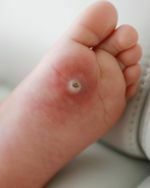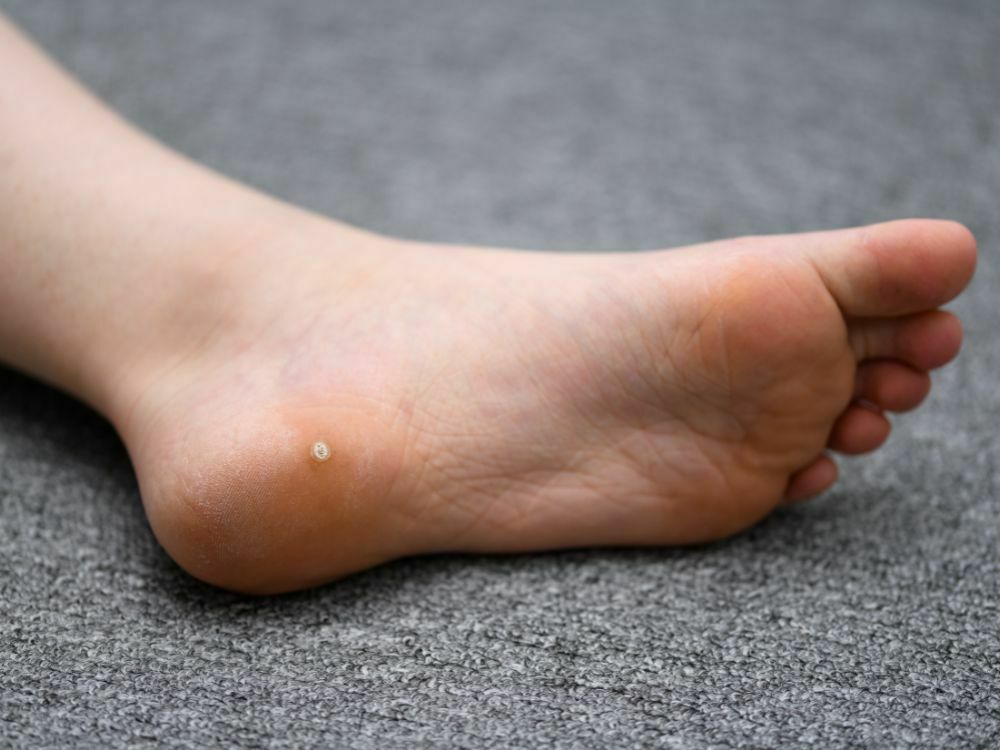Description of corns

Corns are thickened areas of skin that form in response to excessive pressure and friction. They are the result of the body’s attempt to protect the skin and the structures beneath it. Corns are usually hard and circular, with a polished or translucent center, like a kernel of corn. They may become painfully inflamed in response to persistent, excessive pressure or friction and ulcerated when they rub against each other.
Type of Corns
There are two types of corns. The most common type develops on the tops and tips of the toes and along the sides of the feet. These are called heloma durums (hard corns) and are caused primarily by improper-fitting shoes and toe deformities. The second type develops between the toes and is sometimes referred to as a “kissing corn.” They are called heloma molles (soft corns) and usually are the result of bone abnormalities in the toes.
Heloma durum (Hard Corns)
In many people, the toes do not lie flat, but curl downward. This would not be a problem if the person always walked barefoot. Fitting curled toes into shoes with tight toe boxes is one of the main causes of hard corns. The toes remain curled inside the shoe, and the tops of toes press against the inside of the shoe, usually at the toe joints. Additionally, the tip of the curled toe presses against the sole of the shoe. The skin compensates for this added pressure by thickening at the point of contact and heloma durums develop to protect the underlying structure.
Heloma molles (Soft Corns)
Heloma molles typically develop between the fourth and fifth toes when one of the toe bones (phalanges) is slightly too wide. Normal phalanges are hourglass-shaped and the tips are wider than the middle. Kissing corns result when the ends of the toe bones are too wide, causing friction in between the toes. This problem is aggravated by tight-fitting shoes. People with normal toe bones can also develop soft corns. This condition is especially common in women who wear high-heel shoes, which shift the body’s weight to the front of the foot, cramming the toes into a narrow, tapering toe box.
Treatment of Corns
Treatment of Heloma durum (hard corns)
The causes of hard corn suggest two kinds of treatment. First, it's about wearing a looser shoe or sandals. Then, the alternative in cases of bone deformation is to use a suitable orthosis for people whose bones are still flexible to straighten them and restore their normal posture. Small cushions can also be used to straighten the toes. However, these solutions rarely produce a permanent effect.
When the toes are not flexible, surgery may be an option. The toe may be held in an abnormal position because the soft tissue around the bones has become stiff. If the soft tissue is released, the toe may straighten. This surgery is explained in the section on hammertoes. Hammer Toe.
Surgery may seem excessive to relieve the discomfort of corns, but the only other option is have them cut or burned off with a topical acid solution or plaster. This procedure does not correct the underlying problem, so the corns often recur.
Treatment of Heloma Molles (soft corns)
People with soft corns caused by excessively wide toe bones can switch to wider shoes with more room between the toes. Usually, however, this is not very successful. A surgical procedure that can be performed in the physician’s office may provide relief. The podiatrist makes a small incision in the toe and grinds down the piece of bone that is causing the irritation. The incision is closed with a couple of stitches. The procedure is quick, the recovery time is brief, and most patients obtain relief almost immediately.
Contact your podiatrist
Contactez notre clinique de podiatre à Laval, we will be delighted to meet you.
The information provided in this web site is not intended to be a substitute for medical examination, diagnosis or treatment. The material is provided for information purposes alone.

